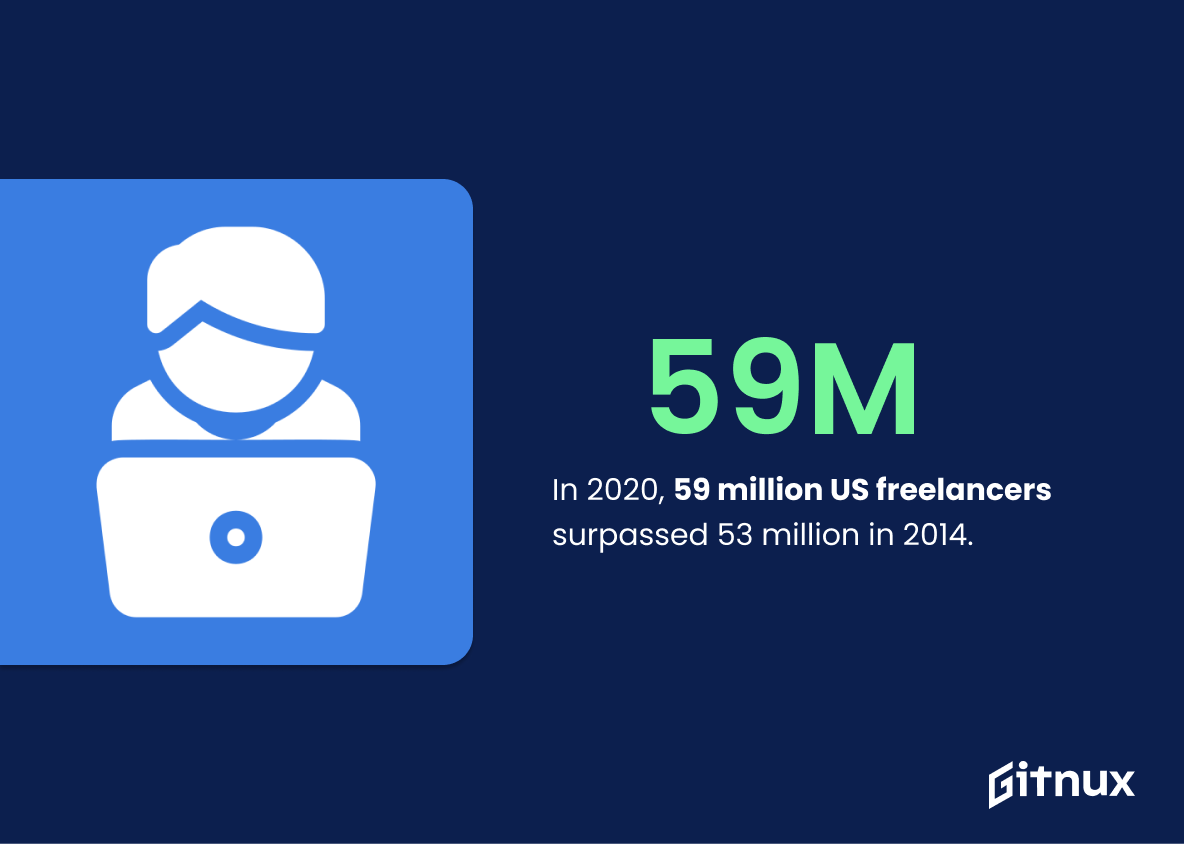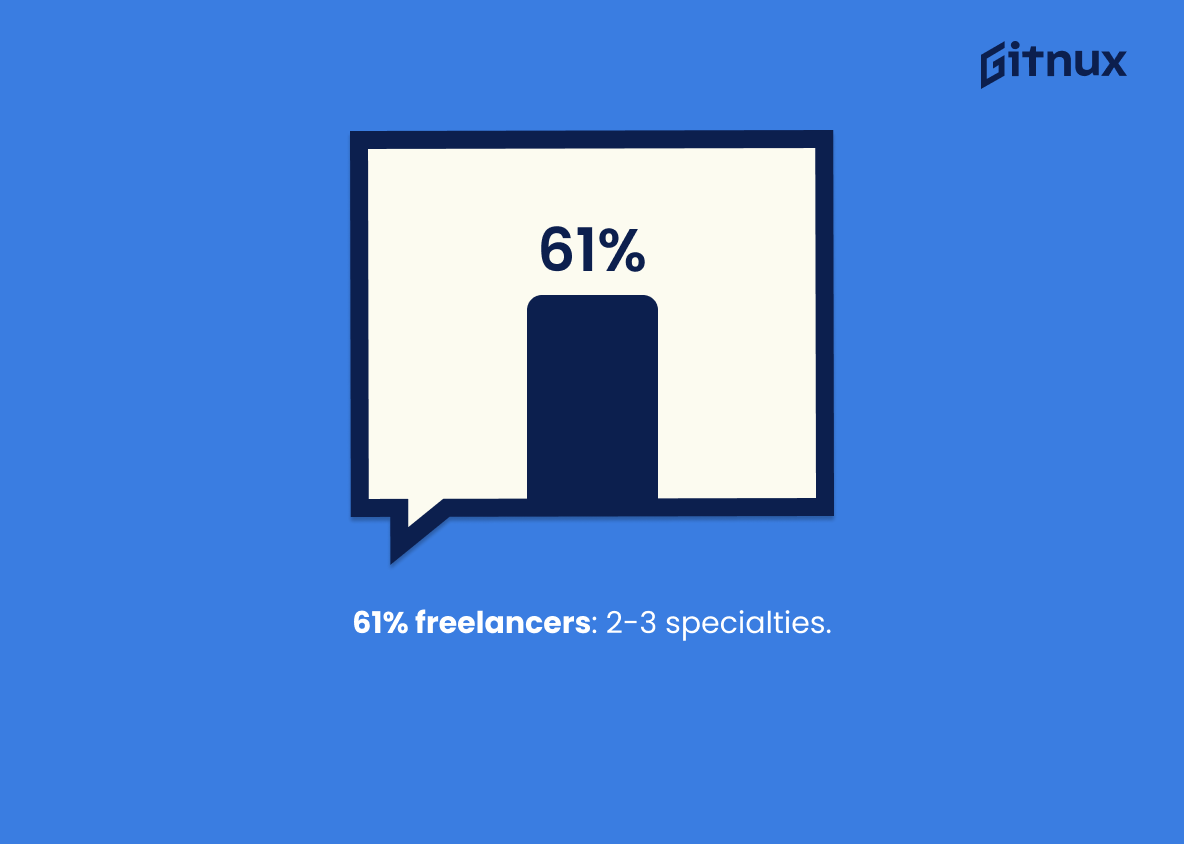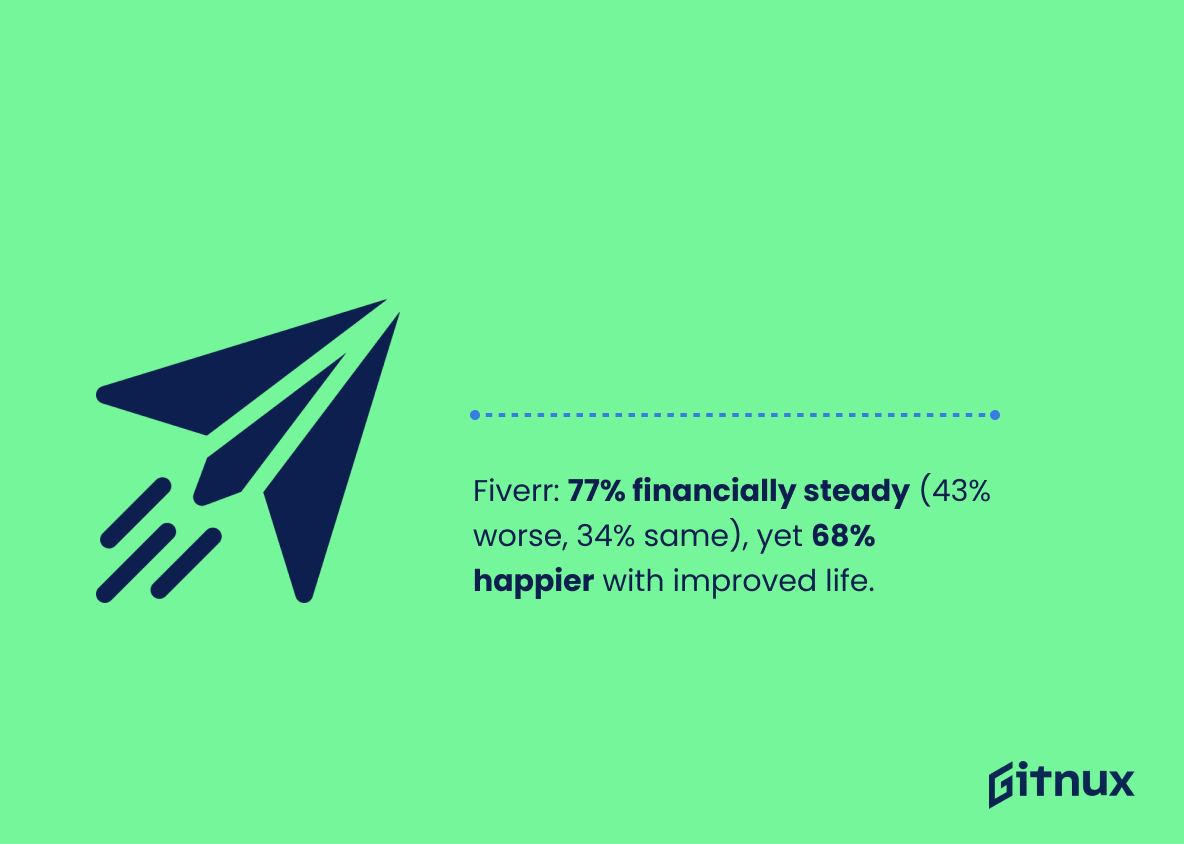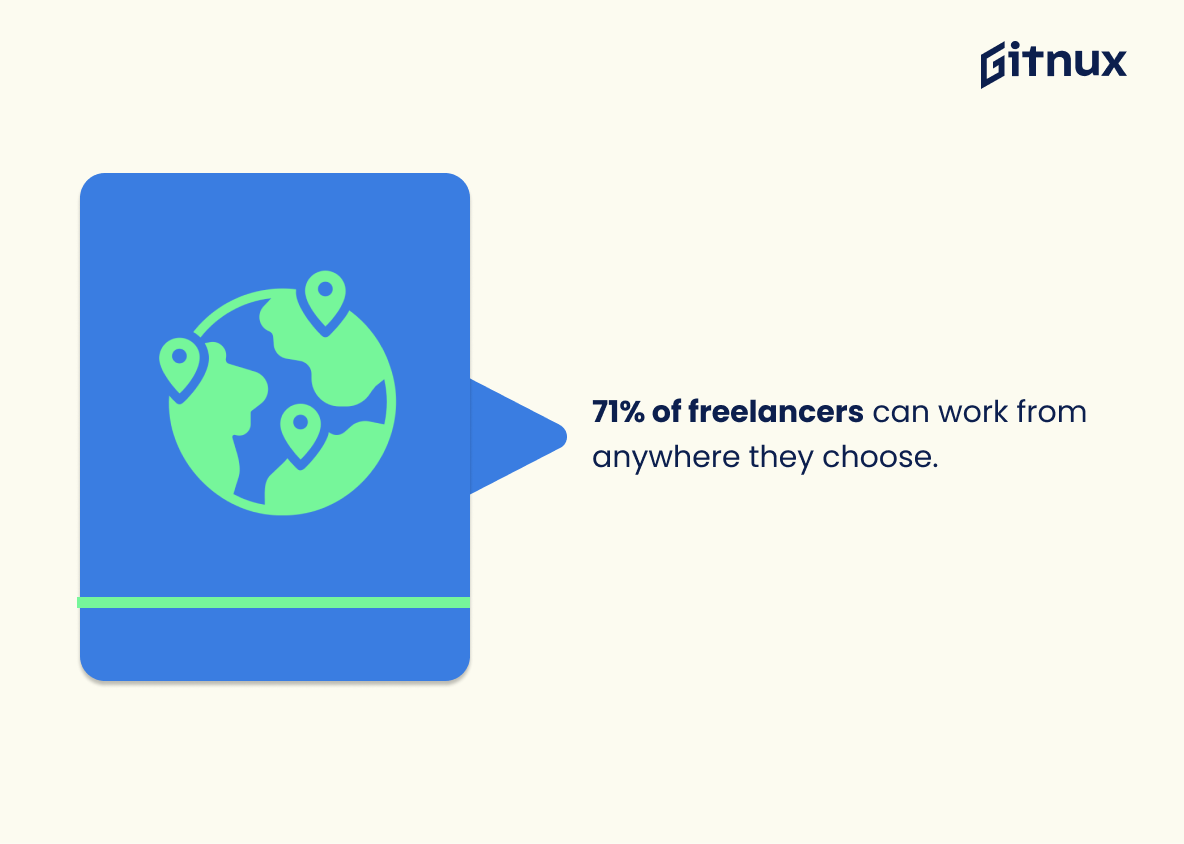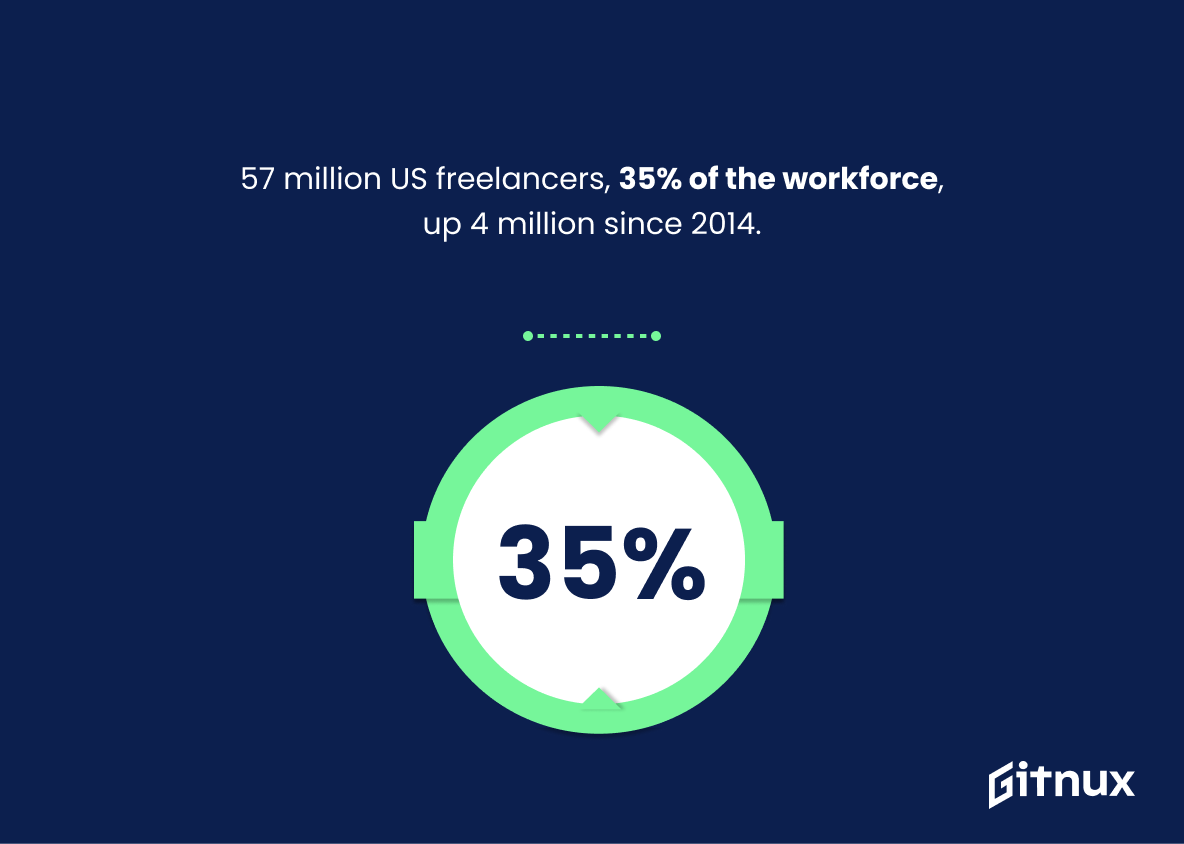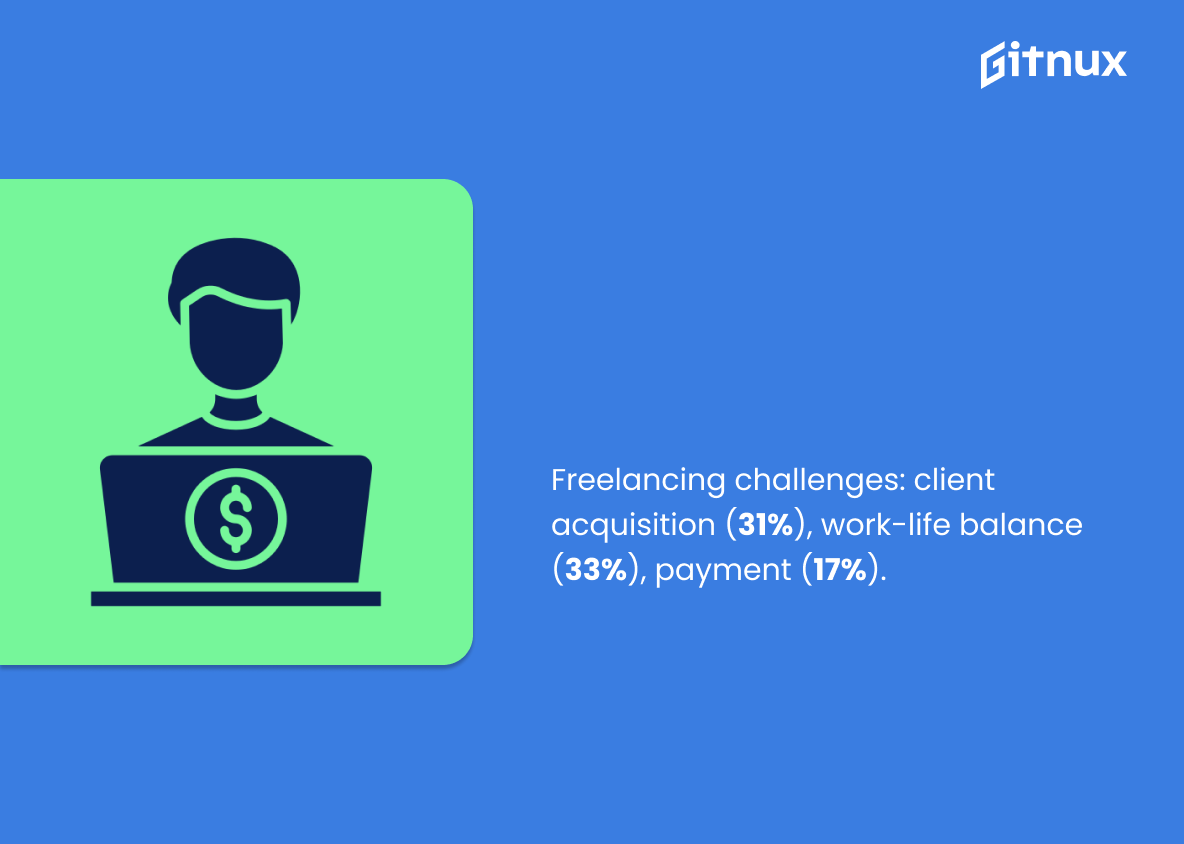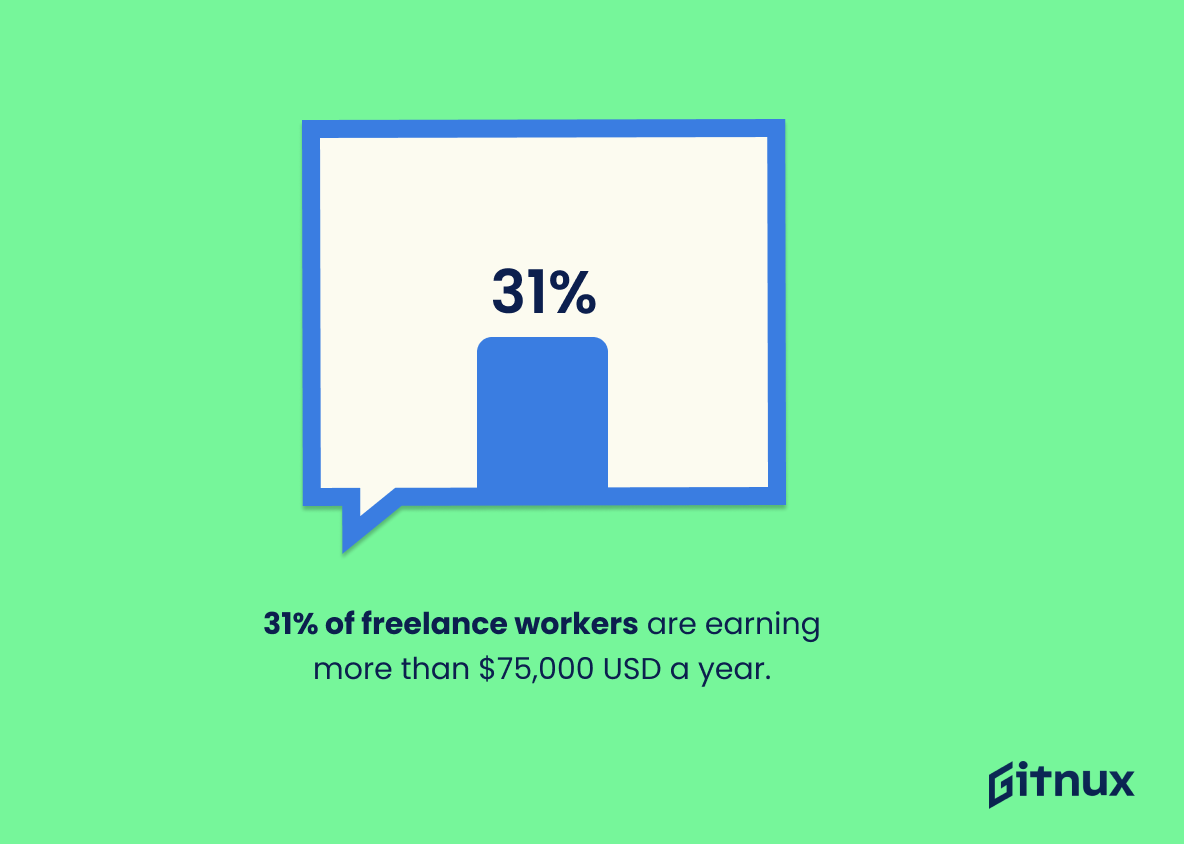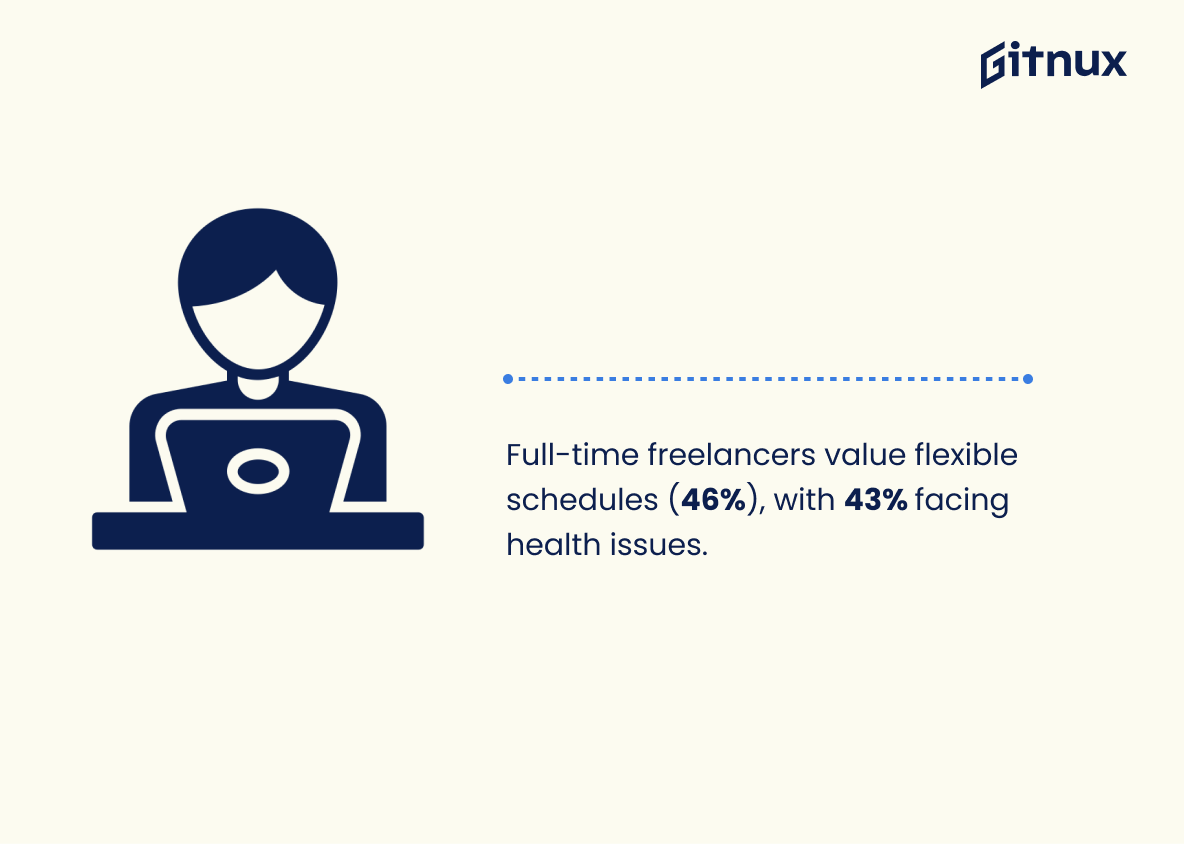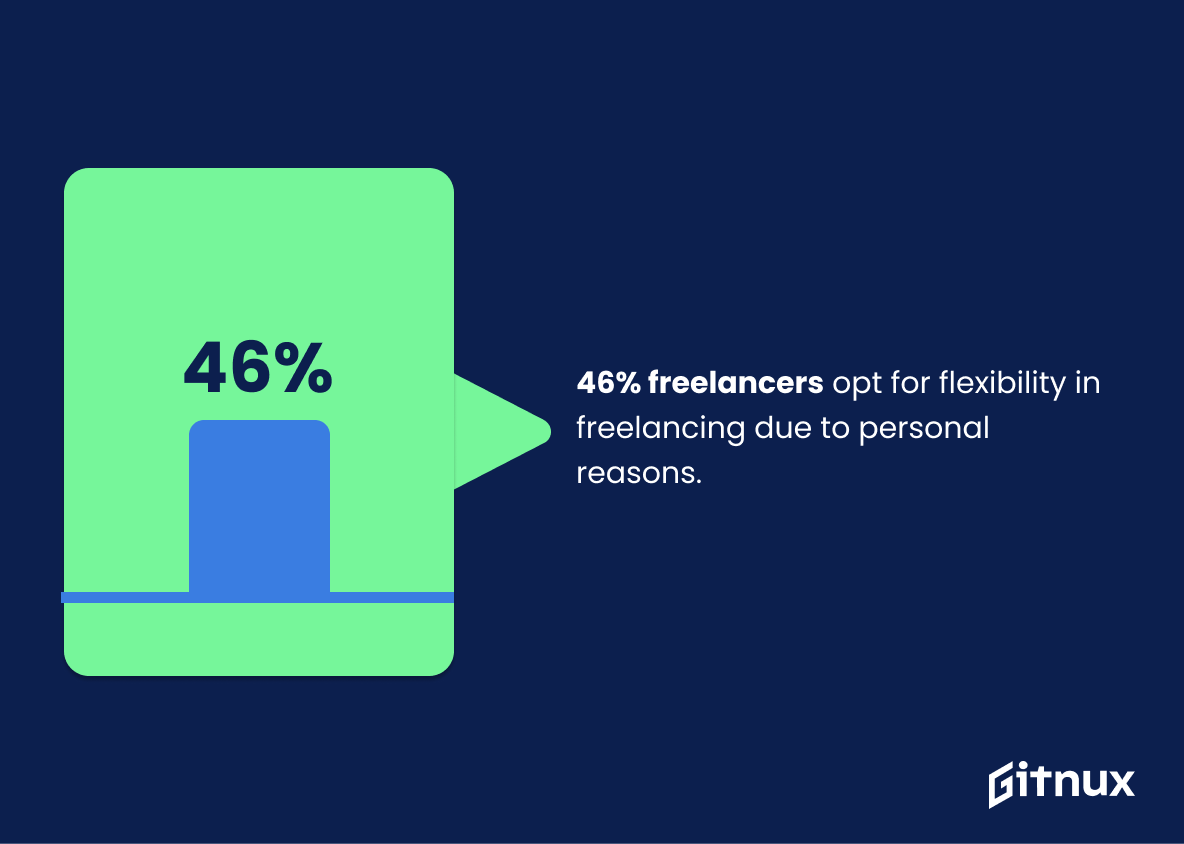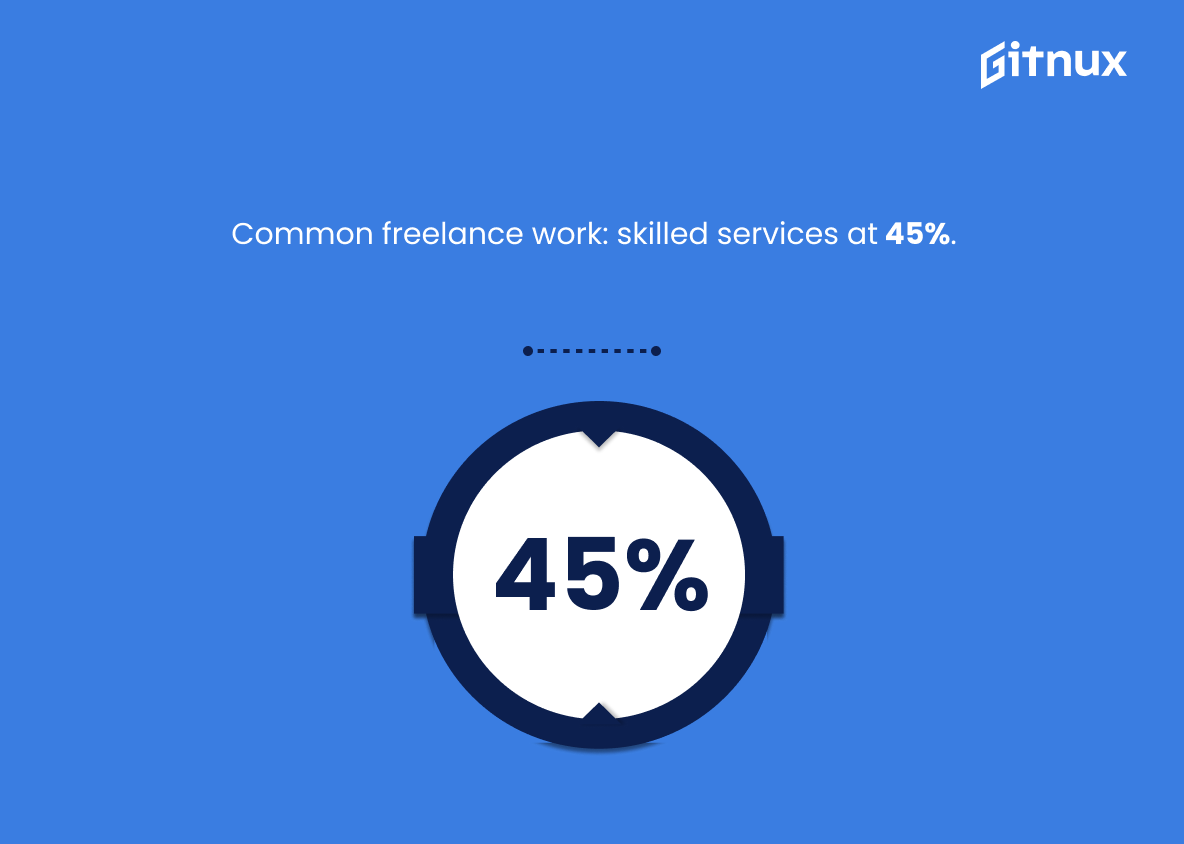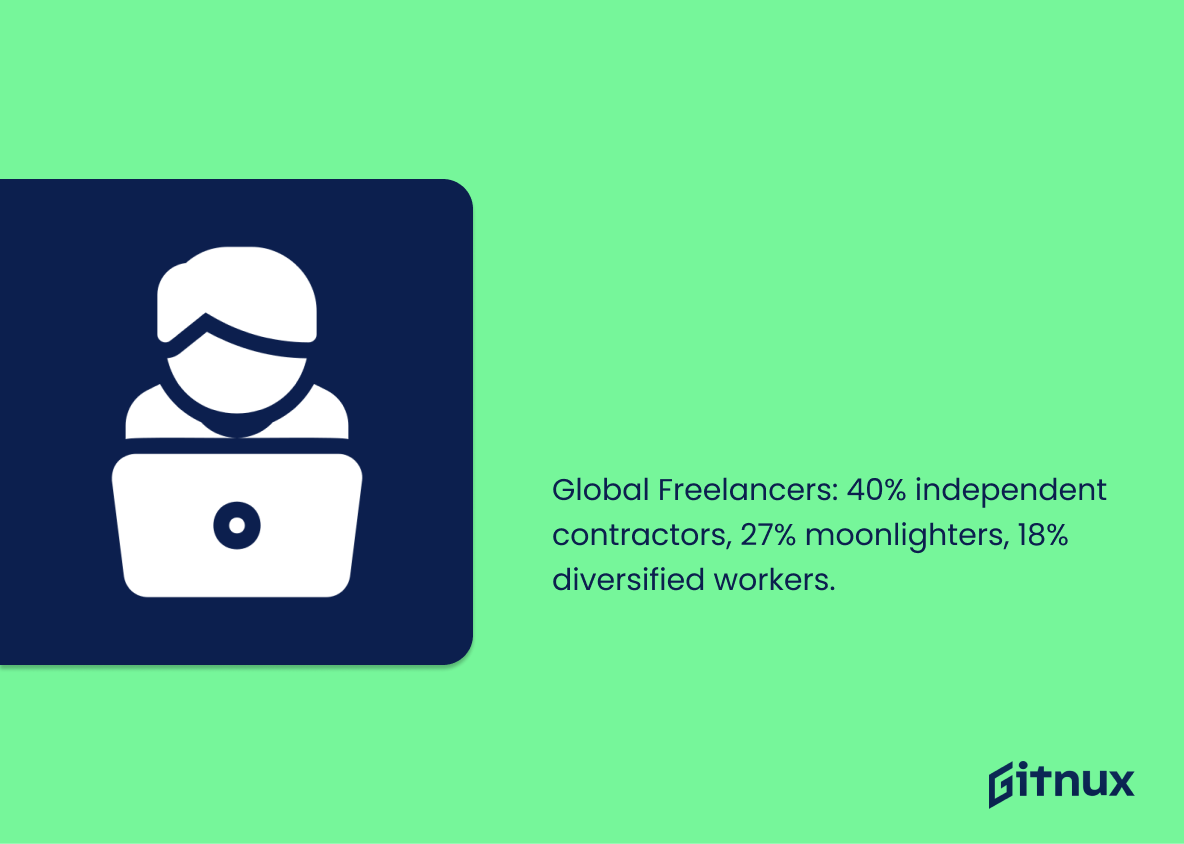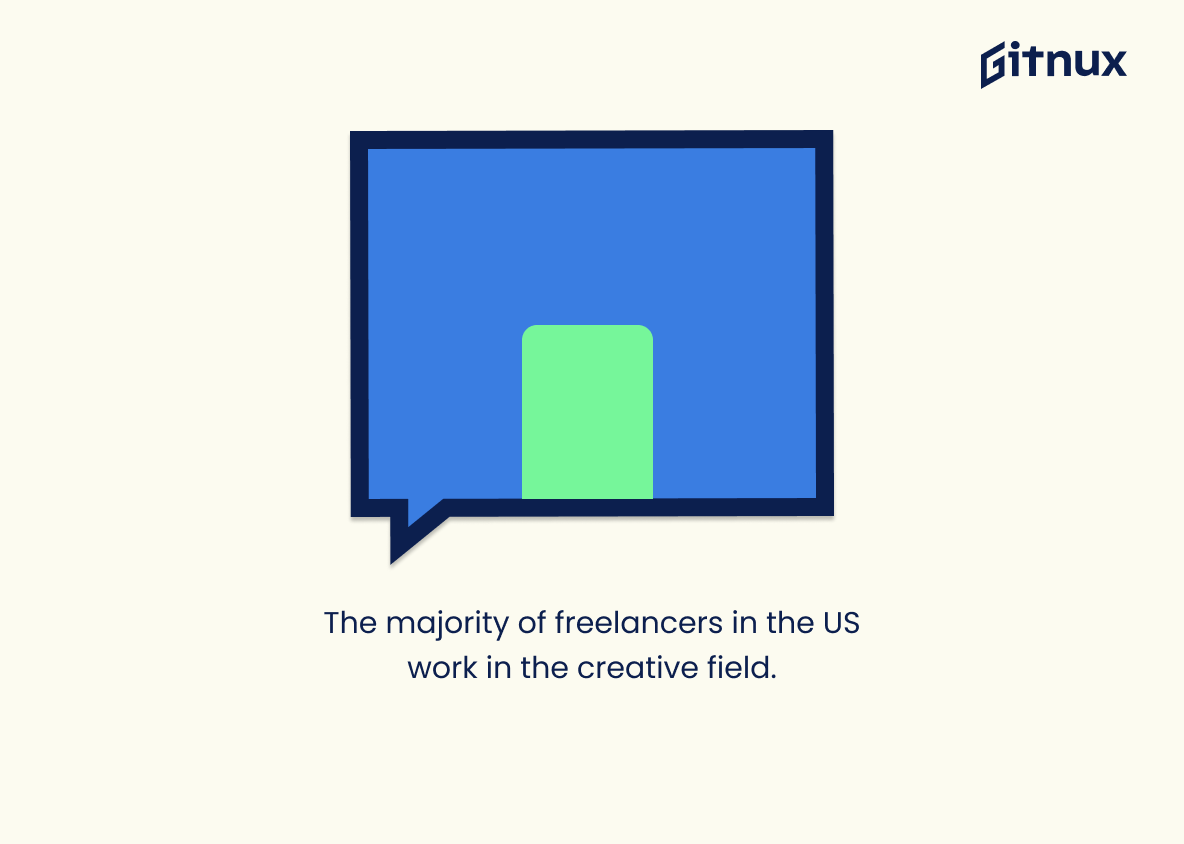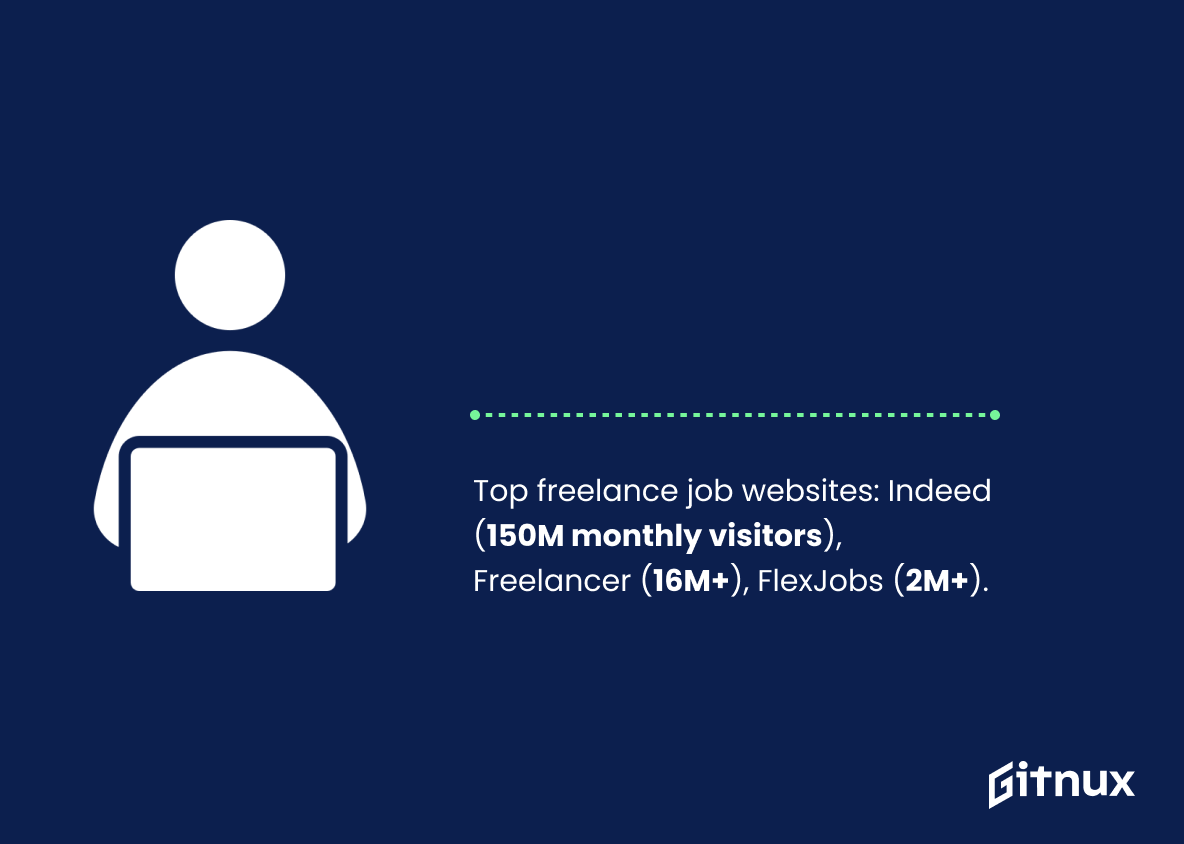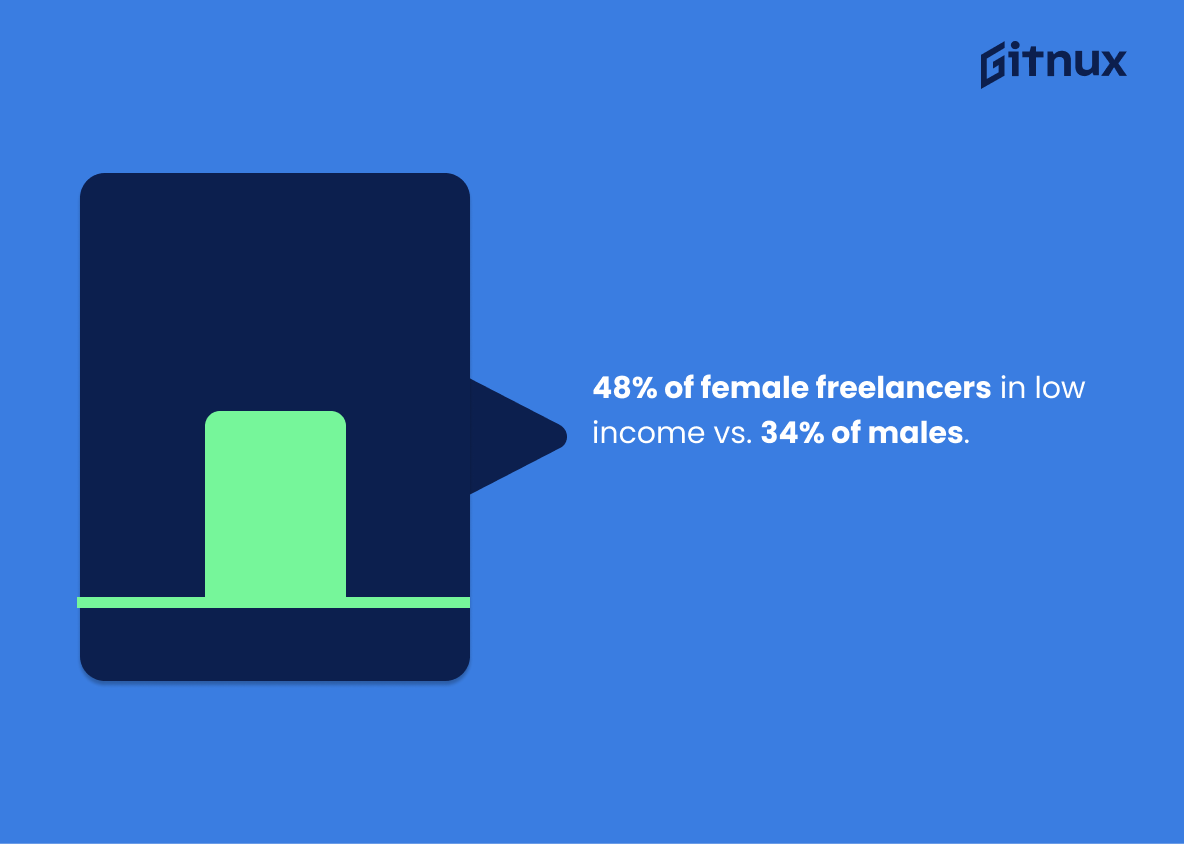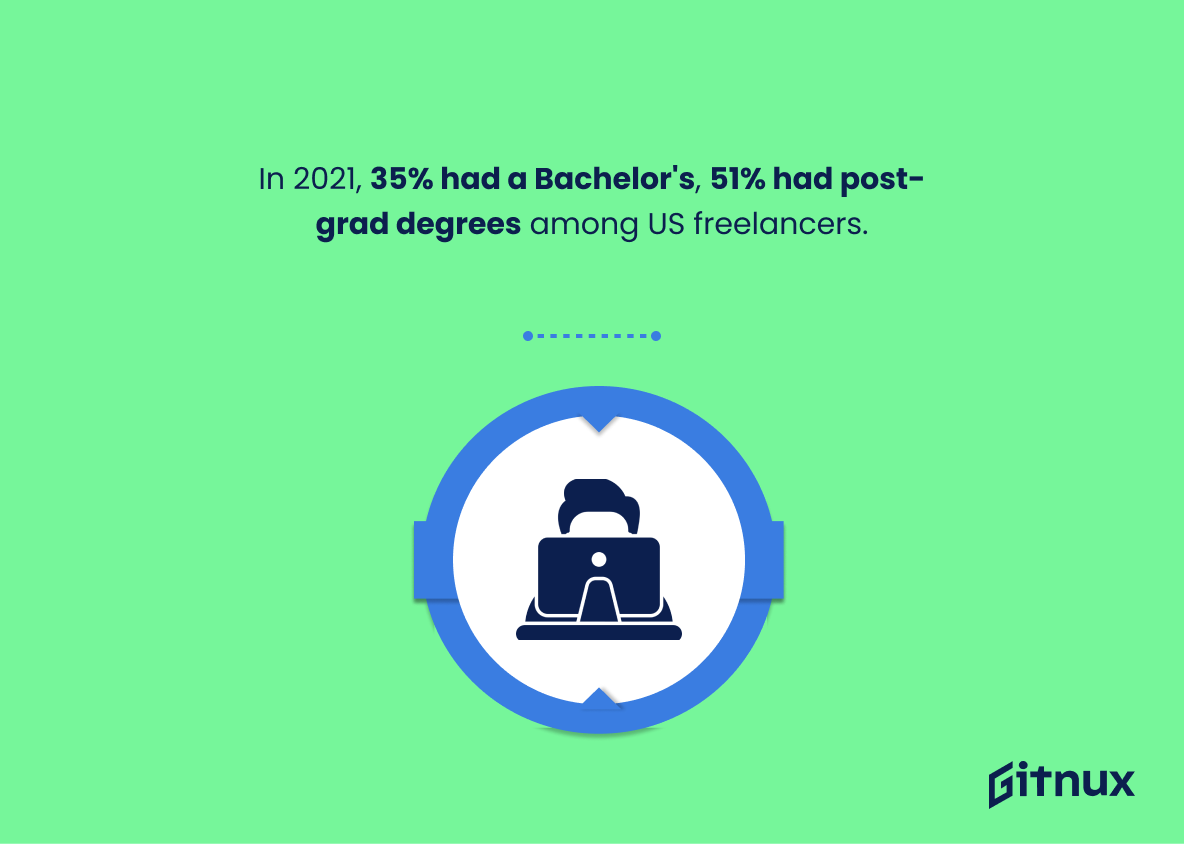Welcome to our article on freelance statistics! Freelancing is an increasingly popular career path, and understanding the trends and opportunities in this field can help you make informed decisions about your career. In this article, we will take a look at recent trends in the freelancing industry and explore how freelancers can take advantage of them.
We will also discuss the advantages and disadvantages of freelancing and provide resources for those who are interested in pursuing a career as a freelancer. Whether you’re a freelancer looking for new opportunities or someone considering taking the plunge into freelancing, we hope this article will help you make informed decisions about your career.
Freelance: The Most Important Statistics
- Approximately 1.57 billion people in the global workforce are freelancers.
- Worldwide, the total freelance platform market is estimated to be worth 3.39 billion USD.
- 46% of freelancers agree freelancing gives them the flexibility they need because they’re unable to work for a traditional employer due to personal circumstances.
General freelance statistics
In 2020, there were 59 million people doing freelance work in the United States. This is an increase from 2014, when there were about 53 million people freelancing. The number of freelancers in the US has been increasing since 2014.
Freelancers contribute nearly 1 trillion USD in freelancing income to the economy, or nearly 5% of the US GDP. Freelance income contributes more to the economy than industries such as construction and transportation, and is on par with the information sector. Freelancers doing skilled services earn a median rate of 28 USD an hour, earning more per hour than 70% of workers in the overall US economy.
61% of freelancers specialize across 2 to 3 talents. Only 5% of respondents said they focus their work around a single skillset, and just 13% work for 1 client at a time.
51% majority of freelancers say no amount of money would entice them to take a traditional job.
According to Fiverr Workspace report, 77% of freelancers admitted they are not more financially stable since going independent: 43% say they are worse off and 34% say they are about the same. And yet, they’re markedly happier: 68% of respondents said their quality of life has improved since going independent.
Nearly all (96%) freelancers say the freelance job market has changed in the past 3 years. Among those who have seen change: 77% say technology has made it easier to find freelance work. 71% say perceptions of freelancing as a career are becoming more positive.
71% of freelancers agree freelancing gives them the opportunity to do their work from anywhere they choose.
86% of freelancers typically work from home.
The 57 million Americans who freelanced this year represent 35% of the US workforce and an increase of 4 million freelancers since 2014.
78% of freelancers agree that soft skills are at least just as important as technical skills to succeed in their work.
The 3 major challenges and freelancing problems are landing clients (31%), struggle with work-life balance (33%), and getting better payment (17%).
36% of workers reported that they freelanced even in the pandemic – up 8% from 2019.
31% of freelance workers are earning more than 75,000 USD a year.
Social media is currently used by 74% of the freelancers to promote their services, up from 65% two years ago. The most significant change is the growing popularity of Instagram, now used by 21% of freelancers.
Top reasons to freelance and its main benefits
The top reason full-time freelancers choose to freelance is schedule flexibility. In fact, 46% of freelancers agree freelancing gives them the flexibility they need because they’re unable to work for a traditional employer. Among those, 43% have health issues. This means that 1 out of 5 freelancers face health challenges that would prevent them from working if it weren’t for freelancing.
84% of freelancers say work lets them live the lifestyle they want. 64% of freelancers say their health has improved. 46% choose their job because of their flexibility.
46% of freelancers agree freelancing gives them the flexibility they need because they’re unable to work for a traditional employer due to personal circumstances.
Companies prefer freelancers over staffing firms to complete projects faster (62%), to reduce costs (55%), to increase the transparency in the process (49%), and to access skills not available today (49%).
Types of freelance work
The largest type of freelance work is skilled services (like computer programming, marketing, IT, business consulting, etc.) at 45% of freelancers.
Other types of freelancing include unskilled services (like dog walking, ridesharing and personal tasks) at 30%, selling goods (like on eBay or Airbnb) at 26%, and other activities at 29%.
The breakdown of Global Freelancers, according to FinancesOnline: 40% of freelancers are independent contractors, 27% are moonlighters, 18% are diversified workers, 10% are temporary workers, and 5% are freelance business owners.
Content writing is one of the most popular freelancer occupations.
The majority of freelancers in the US work in the creative field.
The most popular freelance jobs platforms
There are several popular freelance job websites where freelancers constantly look for jobs. The most popular, Indeed, is able to attract 150 million freelancers to visit their platform every month. It is followed by Freelancer with more than 16 million freelancers and FlexJobs with around 2 million freelancers looking for jobs on a monthly basis.
Freelance demographics
The younger the worker, the more likely they are to freelance. Every generation has more than 1 in 4 workers who freelance. The ascent of freelancing is clear in generational results: 29% of Baby Boomer workers (ages 55+) freelance, 31% of Gen X workers (ages 39-54) freelance, 40% of Millennial workers (ages 23-38) freelance, and 53% of Gen Z workers (ages 18-22) freelance.
Over 48% of women freelancers fall into the lowest income range, compared to only 34% of men fall into the same bracket. This means that men are about 4.5x more likely to earn 150k USD per year than women.
52.3% of all freelancers are women, while 47.7% are men. The average age of an employed freelancer is 37 years old. The most common ethnicity of freelancers is White (76.1%), followed by Hispanic or Latino (10.2%), Asian (7.6%) and Black or African American (3.5%).
In 2021, 35% of US freelancers had a Bachelor’s degree. 51% of freelancers had a post-graduate degree in that same year.
59% of US freelancers are men.
Men generally make more money freelancing than women (in some cases, up to 4x more).
Experience is a major factor in the hourly rates commanded by freelancers. More experienced freelancers over the age of 55 earn more than twice as much as their 18-24-year-old peers.
The state of freelancing in different countries
Leading freelancing countries based on revenue growth are Philippines (208%), India (160%), Japan (87%), Australia (86%), Hong Kong (79%), Mexico (72%), Canada (71%), and Spain (66%).
According to Inc.com, the majority of freelancers are found in the following regions: 35.5% in Europe, 29.2% in Latin America, 28.0% in Asia, 10.1% in Africa, and 4.1% in North America.
Approximately 1.57 billion people in the global workforce are freelancers.
Worldwide, the total freelance platform market is estimated to be worth 3.39 billion USD.
Worldwide, the average freelancer earns $21 per hour, more than 50% of freelancers have postgraduate education, up 6% from 2020 to 2021, while freelancing for those with a high school diploma or less declined from 37% to 31%.
Countries with lower domestic work opportunities are seeing a surge in freelance professionals, US 78%, UK 59%, Brazil 48%, Pakistan 47%, Ukraine 36%, Philippines 35%, India 29%, and Bangladesh 27% rank in the top 10 countries with the fastest-growing earnings for freelancers.
The future of freelancing
58% of non-freelancers are now considering freelancing in the future.
The United States has the top-rising freelance economy at 78% of year-on-year revenue growth.
59% of non-freelancers say it is likely that they will do freelance work in the future.
Currently, at 58 million and counting, freelancing is poised to become the U.S. majority workforce by 2027. Currently contributing over $1.4 trillion to the U.S. economy, the steady increase in the number of skilled individuals taking up freelancing every year has made freelancers the favorite to become the U.S. majority workforce within the next few years.
Global freelance platform market size is projected to boom at a CAGR of 15.3% during 2021-2026.
By the year 2027, freelancers are projected to make up the majority of the workforce in the United States, with 50.9% of the working population.
Compared to 57.3 million United States freelancers in 2017, the number is set to rise above 90 million by 2028.
The vast majority of freelance workers (91%) believe that the future of freelance work is positive.
The number of freelancers in the USA is estimated to reach 79.6 million by 2025 and 90.1 million by 2028.
Supplementary Statistics
57.3 million people freelanced in the US in 2020.
This is a powerful indicator of the growing prevalence of freelancing in the US. It demonstrates that more and more people are turning to freelancing as a viable career option, and that the freelance economy is becoming an increasingly important part of the US economy. This statistic is essential to understanding the current state of the freelance industry and provides valuable insight into the future of freelancing.
Freelancers in the European Union made up 31.2% of the workforce in 2020.
Freelancing is becoming an increasingly popular career choice, with more and more people opting to take control of their own professional destiny. This statistic is especially relevant to a blog post about freelance statistics, as it provides a snapshot of the current state of the freelance industry in the EU.
There are approximately 55 million freelancers in India.
It speaks to the potential of the freelance market in India, and the opportunities it presents for those looking to make a living through freelancing. It also serves as a reminder of the importance of understanding the dynamics of the freelance market in India, and the need to ensure that freelancers are adequately supported and protected.
63% of freelancers say they started freelancing by choice, not out of necessity.
Freelancing is no longer seen as a last resort, but rather a desirable option for many people. This statistic is important to consider when discussing the freelance economy, as it demonstrates that freelancing is becoming increasingly popular and accepted.
56% of freelancers have at least one college degree.
Thus, freelancers are not only capable of completing tasks independently, but also have the knowledge and skills to do so. This statistic is important to consider when discussing the freelance industry, as it demonstrates the level of expertise and dedication that freelancers bring to the table.
77% of freelancers experience increased income within their first year of work.
With hard work and dedication, freelancers can expect to see a significant increase in their income within the first year of work. This is an encouraging sign for those considering taking the plunge into the world of freelancing, and serves as a reminder that the rewards can be great.
57% of freelancers found more work online in 2017 than in 2016.
The online job market is growing, and that freelancers are increasingly turning to the web to find work. This is an important trend to note, as it indicates that the freelance economy is becoming more and more viable. This is a valuable insight into the current state of the freelance industry, and is an important piece of information to consider when discussing freelance statistics.
The top 3 freelance job categories are writing, graphic design, and web development.
This is a useful indicator of the current trends in the freelance industry, and can help inform readers of the types of jobs they may want to pursue. Additionally, it can help readers understand the types of skills they may need to develop in order to be successful in the freelance world.
40% of freelancers identify having a flexible schedule as the top reason for choosing to freelance.
A majority of freelancers prioritize the freedom to set their own schedule. This is an important point to consider when discussing the advantages of freelancing, as it highlights the potential for increased autonomy and control over one’s own time.
Private sector employers who engage freelancers save an average of 38% on HR costs.
This demonstrates that private sector employers can significantly reduce their HR costs by utilizing freelancers, making it an attractive option for businesses looking to cut costs. This statistic is especially pertinent to a blog post about Freelance Statistics, as it provides a tangible example of the financial advantages of hiring freelancers.
70% of freelancers report having difficulties in getting paid on time.
Thus, there is a need for freelancers to be aware of the potential pitfalls of working on a freelance basis and to take steps to ensure that they are paid promptly. It also serves as a warning to employers that they should take steps to ensure that they are paying their freelancers on time, as this can have a significant impact on their reputation and the quality of their services.
62% of millennials and Gen Z will work completely remotely by 2030.
By 2030, the majority of millennials and Gen Z will be working completely remotely, which could open up a wealth of opportunities for freelancers to take advantage of. This statistic is a clear sign that the freelance economy is only going to continue to grow in the coming years.
Conclusion
Freelancing is a great way for people to make extra income, or even make a full-time living. From the statistics presented, it is clear that more and more people are turning to freelancing to make their fortunes.
With the right skills and dedication, freelancing can provide a steady stream of income and the opportunity to be your own boss. The possibilities are endless, and the future of freelancing looks bright.
Resources
DDIY: “55 Freelance Statistics”, cited January 2023. (Source)
Demand Sage: “49+ Freelance Statistics 2022: Latest Trends Revealed”, cited January 2023. (Source)
Exploding Topics: “57+ Freelance Statistics, Trends and Insights (2023)”, cited January 2023. (Source)
FinancesOnline: “405 Freelance Statistics for 2023: Market Size, Profile Data & Salary Rates”, cited January 2023. (Source)
FirstSiteGuide: “Freelance Statistics: 40 Facts and Trends You Should Know in 2023”, cited January 2023. (Source)
Fiverr Workspace: “The Slash Workers”, cited January 2023. (Source)
Flexiple: “Freelance Market Statistics & Trends [Updated for 2022]”, cited January 2023. (Source)
Freelancermap: “5 freelancer nightmares: the top hurdles you face and how to deal with them”, cited January 2023. (Source)
Payoneer: “The 2020 Freelancer Income Report”, cited January 2023. (Source)
Statista: “Number of freelance workers in the United States from 2014 to 2020”, cited January 2023. (Source)
Statista: “Freelance workers in the United States in 2021, by level of education”, cited January 2023. (Source)
Upwork: “Sixth annual “Freelancing in America” study finds that more people than ever see freelancing as a long-term career path”, cited January 2023. (Source)
Zippia: “Freelancer demographics and statistics in the US”, cited January 2023. (Source)
ZipDo, cited June 2023: Freelance Statistics
